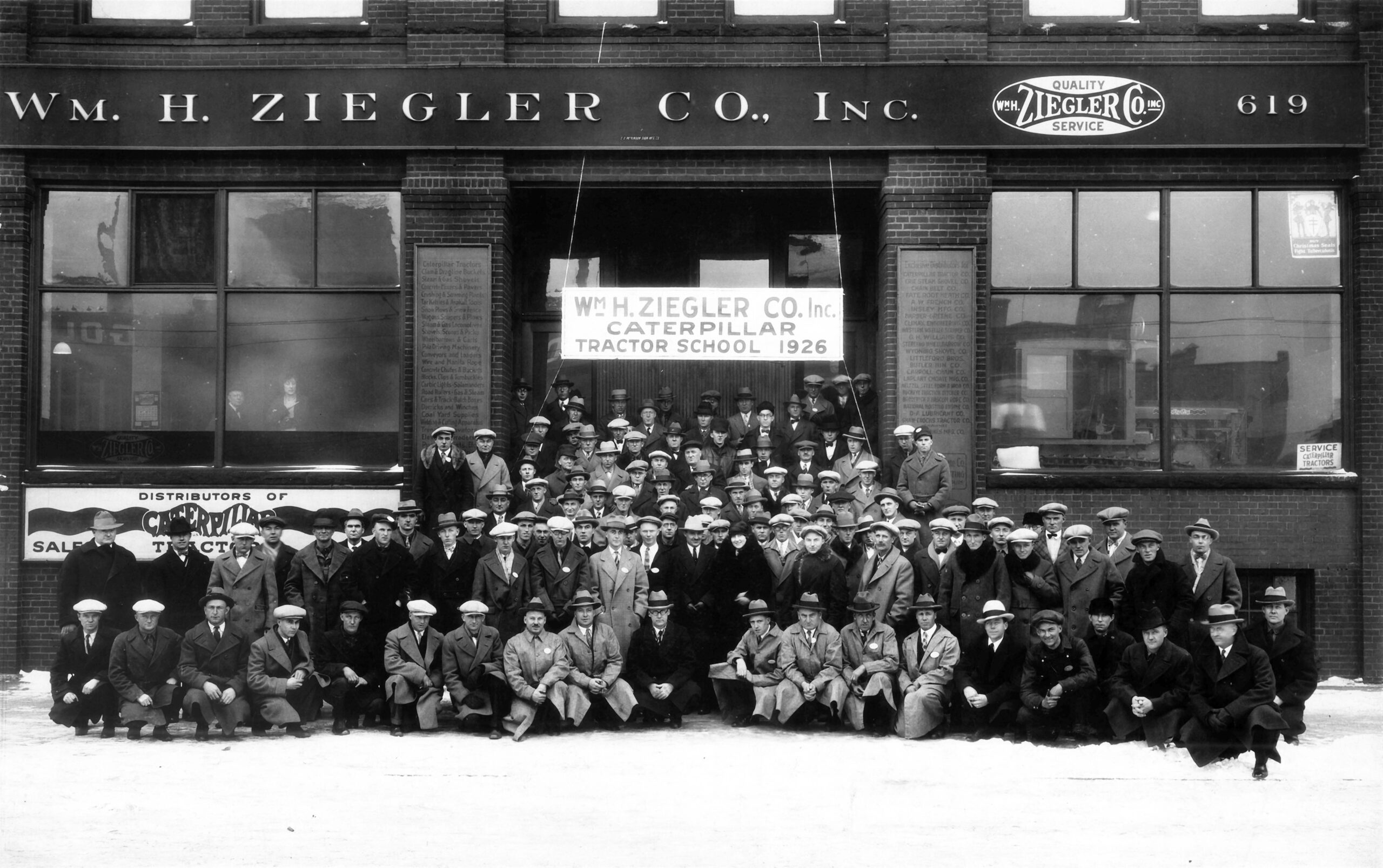
Published on April 24, 2025
Surviving the Great Depression (1924–1933)
The 1920s were a decade of economic growth and industrial expansion, but by the end of the decade, the United States faced a historic economic collapse. The Great Depression, beginning in 1929, brought widespread unemployment, halted industrial projects, and created uncertainty for businesses nationwide. For Wm. H. Ziegler Co., this was a defining era that tested its resilience and commitment to its customers.
Early Expansion and Preparing for Uncertainty
In the years leading up to the Great Depression, Ziegler CAT steadily expanded its reach across Minnesota and beyond. William H. Ziegler’s philosophy of maintaining robust inventories and focusing on customer support proved prescient as these practices allowed the company to navigate the sudden economic downturn with greater stability. By the late 1920s, Ziegler had also begun to consolidate smaller Caterpillar dealerships in the region, ensuring a stronger market presence.
Adapting to the Great Depression
When the stock market crashed in 1929, the construction and agriculture industries—two key markets for Ziegler—were hit particularly hard. Projects were delayed or canceled altogether, and many customers struggled to make payments on equipment purchases. Understanding the challenges his customers faced, Ziegler adapted by offering flexible payment plans and creative financing solutions to keep businesses operational.
One significant advantage for the company during this time was its partnership with Caterpillar, which was already becoming a leader in heavy equipment manufacturing. Caterpillar machinery, known for its durability and efficiency, became indispensable for public works projects, such as those funded by the Works Progress Administration (WPA) and Civilian Conservation Corps (CCC). Ziegler CAT supplied equipment for projects like roads, bridges, and other infrastructure improvements, which were vital for economic recovery.
Building Relationships During Hardship
While the Great Depression was a time of financial strain, it also provided an opportunity for Wm. H. Ziegler Co. to deepen its relationships with its customers. Ziegler CAT’s employees often went above and beyond to ensure their clients received the support they needed, whether it was through repairs, parts delivery, or personalized service. The company became known as a reliable partner during a period when trust and dependability were in short supply.
Key Projects and Achievements
One of the highlights of this decade was Ziegler CAT’s involvement in federally funded infrastructure projects. These public works programs not only provided employment for thousands of Americans but also relied heavily on machinery to complete large-scale projects. Ziegler CAT’s Caterpillar tractors and earthmoving equipment were instrumental in the construction of landmarks like the Como Park Zoo in St. Paul and the Split Rock Bridge in
Pipestone County. These projects helped establish Ziegler CAT’s reputation as a trusted equipment provider for large-scale endeavors.
Emerging Stronger
By the time the Great Depression began to ease in the early 1930s, Ziegler CAT had emerged as a stronger, more resilient company. Its ability to adapt to challenging economic conditions, maintain strong customer relationships, and contribute to critical public projects underscored its value as a leader in the heavy equipment industry.
For William Ziegler, this era reaffirmed the importance of his founding principles: providing the best service and building enduring customer partnerships. These values not only sustained the company during difficult times but also positioned it for future growth as the nation began its recovery.
Locations Opened During This Decade
· Mason City, IA – 1928
Posted In: Behind the Scenes

